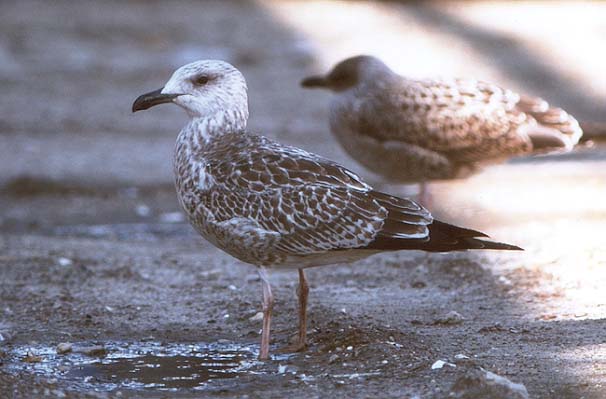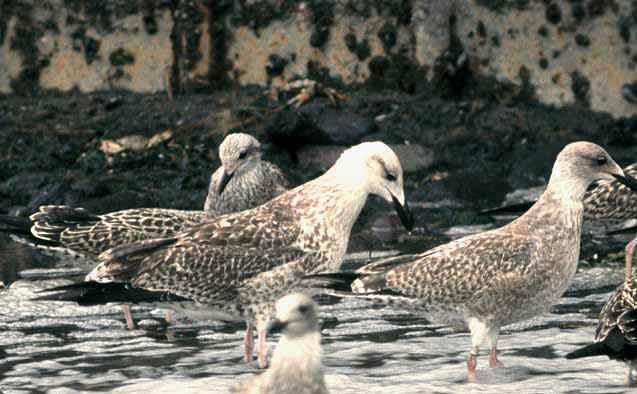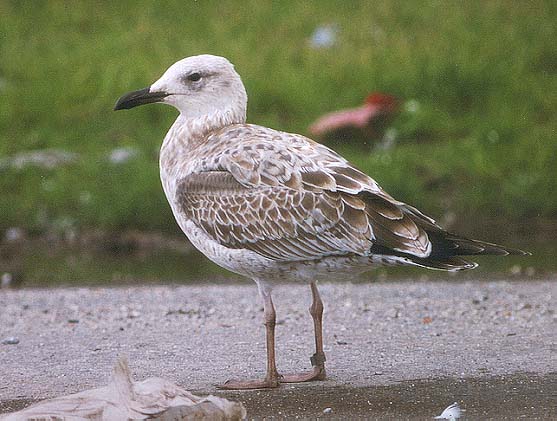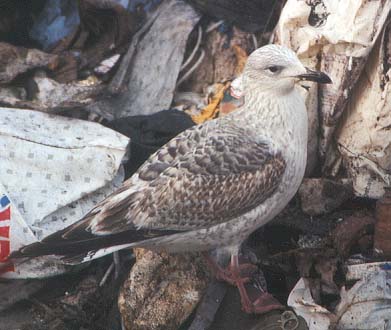 
|
Juvenile Yellow-legged
Gull L. michahellis. Wijster, the Netherlands,
August 2001. Yellow-legged
Gulls usually show a pale head in juvenile/1st winter
plumage although it is often more streaked than in
Caspian, with the most streaking around the eye, forming
a vague mask. The bill of this bird seems rather thin but
the tip is blunt, contra Caspian Gull, which has a
fine-tipped bill.
Moulting juvenile
Yellow-legged Gull. Eemshaven, the Netherlands, 22 August
1999.
A contrasting individual
with a very pale head and dark body. The firm body, large
head, dark blunt-tipped bill and the pattern on its 2nd
generation scapulars secure its identity. The flat head,
also shown by the Herring Gull to the right, is caused by
it being agitated whilst trying to find food in a frenzy.
|



